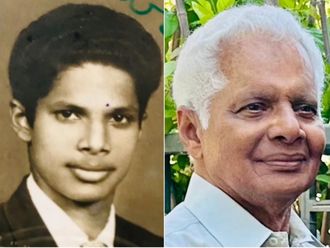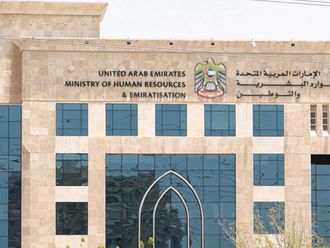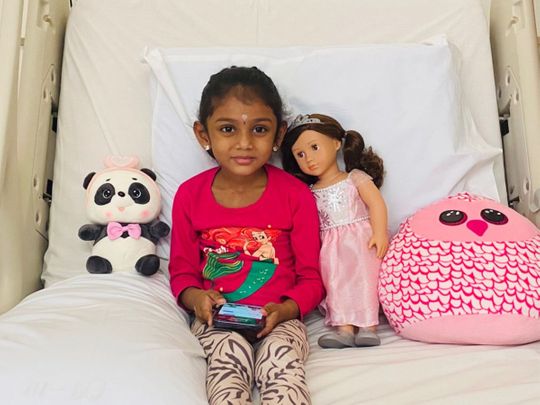
Dubai: In a rare medical condition named Rapunzel Syndrome, a rat-shaped ball of hair — 20cm long and 4cm thick — was recently removed from the small intestine of a five-year-old schoolgirl in Dubai.
When KG student Diya Rajesh complained of stomach pain on October 15, her mother Mahalakshmi Rajesh thought her daughter had not yet completely recovered from the viral fever she had suffered three weeks ago following a bout of vomiting, diarrhoea and stomach pain.
However, along with acute abdominal pain this time, she kept vomiting in greenish yellow colour for three days. When the pain did not subside even after three days of symptomatic treatment from a clinic, Diya was rushed to NMC Royal Hospital in Dubai Investment Park, where doctors diagnosed her with Rapunzel Syndrome and retrieved a rat-shaped ball of hair from her small intestine.
Only few such cases have been reported in world medical literature, said Dr Venkatesh M Annigeri, a consultant paediatric surgeon whose team treated Diya.
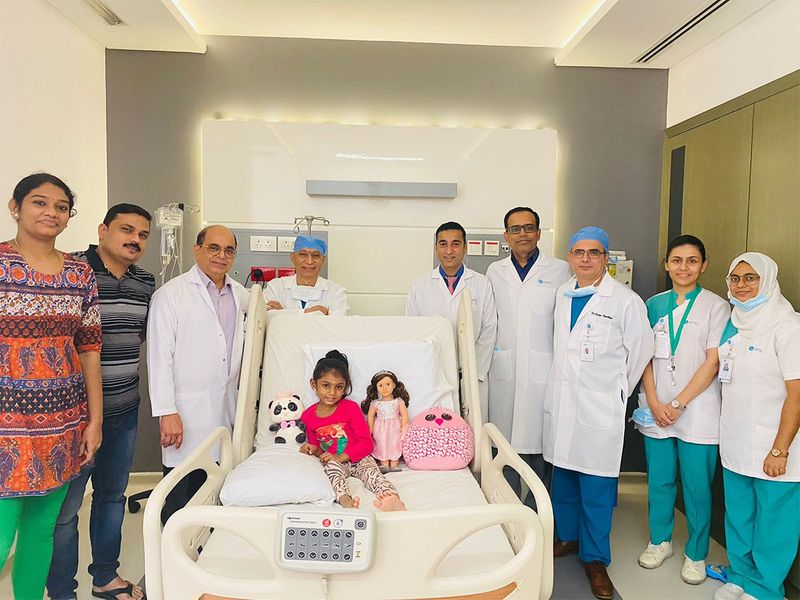
The syndrome
The syndrome is named after the fairy-tale character Rapunzel who was known for her long hair. However, the condition is caused by the habit of eating or ingesting hair, usually found in young women.
On clinical examination after her admission in the emergency department, Dr Annigeri said Diya was diagnosed to have acute intestinal obstruction (complete block in the small bowel).
“With abdominal ultrasound and Contrast Enhanced Computerised Tomography [CECT], the child was diagnosed with a rare clinical condition — primary small bowel trichobezoar — which was causing acute intestinal obstruction,” he added.
He said trichobezoar or concretion of hair refers to a mass of hair accumulated within the gastrointestinal tract.
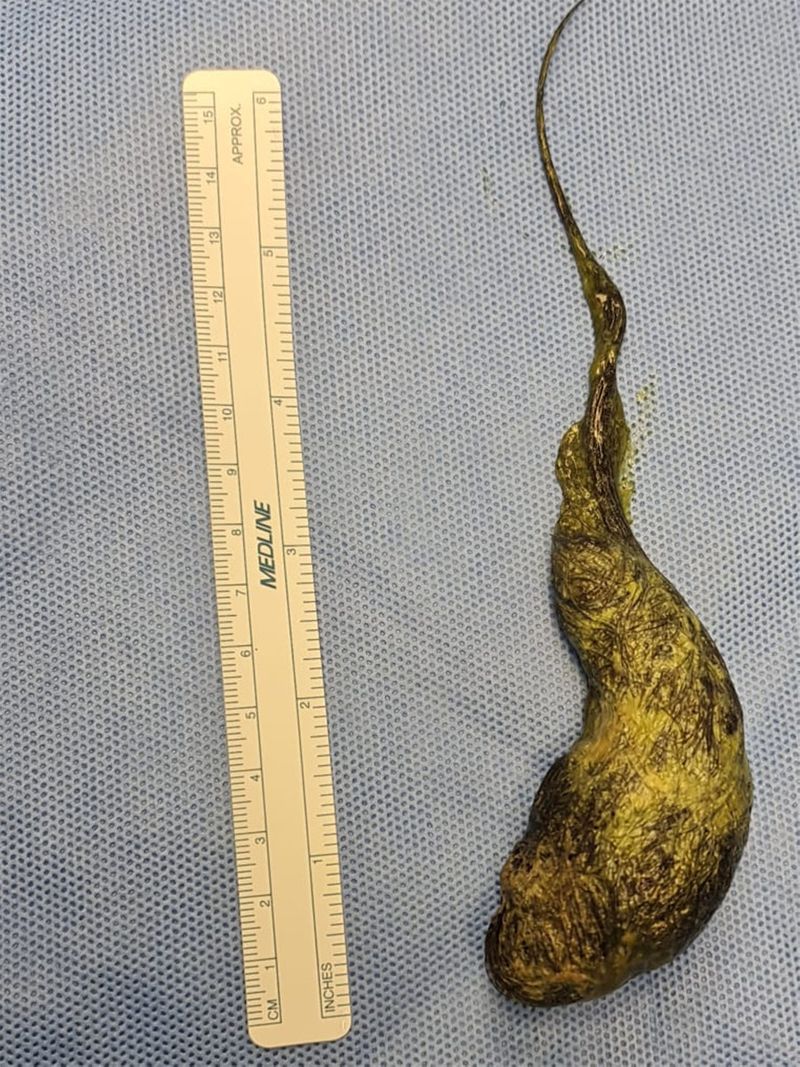
Rare in young age
After an emergency abdominal surgery that lasted for an hour, the rat-shaped hair chunk was removed from Diya’s small bowel on October 18.
“It is a rare clinical entity. Over 90 per cent of trichobezoars are found in young women and girls between 15 and 20 years of age. Our case is very rare due to her very young age.”
Dr Annigeri said a trichobezoar occurs mainly in association with a psychiatric disorder affecting usually young women, having the tendency of pulling out their own hair (trichotillomania) and eating it (trichophagia), which then remains undigested in the stomach.
“Stomach is the common site of occurrence. Primary small bowel bezoar without associated gastric bezoar like in our case is very rare,” he pointed out.
How did Diya get it?
Speaking to Gulf News, Diya’s mother Mahalakshmi said her child had suffered from the hair-ingesting syndrome only when she was a baby.
“That was when she was six-seven months or so,” she said. Mahalakshmi said she was aware of pica disorder in babies due to which they eat non-food items.
“We had noticed that she was picking up hair from the floor and eating. I had to keep cleaning the house three-four times a day. She used to go under the cot and find out some strands of hair. By the time I catch hold of her, she would have swallowed it,” she recollected.
Mahalakshmi said she was hoping that things would be normal when Diya starts having solid food. And it did. “She stopped that habit when she started eating food after some months.”
However, she never expected that her child had ingested such a huge concretion of hair. “She did not know she had this syndrome. When she grew, she loved growing her hair and she doesn’t like to cut her long hair now. So, it was a big shock to us,” she added.
Prevention
Dr Annigeri said parents should watch out for odd habits like eating hair. “If they notice kids pulling the hair and eating, they should immediately seek evaluation from a pediatrician and a psychologist.”
Early diagnosis and treatment can avoid worsening the condition, he said, adding that abdominal pain, loss of appetite and not gaining weight are some of the early signs that parents should take note of.
“The treatment consists of removing the mass by abdominal surgery followed by an evaluation by a psychiatrist. Psychiatric consultation is very important in the treatment of the underlying psychiatric disorders trichotillomania and trichophagia to prevent the recurrence of trichobezoar,” he said.
After being discharged from the hospital on October 24, Diya has been doing well, said her father Rajesh A. “We are scheduled to take her for a counselling session at the hospital though we don’t think she has any issues now,” he said on Wednesday.


